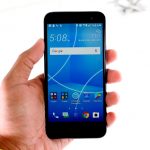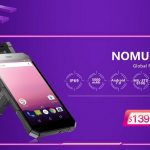HTC’s standalone Vive Focus launches in China for $600
While we’ve already taken a good look at the Vive Focus standalone VR headset with 6DoF “world-scale” tracking, HTC had yet to reveal its detailed specs nor price, but almost a month later, we finally have some answers. First of all, as of December 12th, the device will be available for pre-ordering in China starting from 3,999 yuan or about $600, with shipment commencing in January next year. The base price isn’t far off from the original PC-tethered Vive which is priced at $599 before tax in the US (in China it costs 5,488 yuan which is about $830). Better yet, that price applies to a new white version which, in my opinion, is much better looking than the original “electric blue” — that’s now a limited edition priced at 4,299 yuan (about $650).

In addition to pricing and availability, HTC also shed more light on the internal specifications. We already knew about the Qualcomm Snapdragon 835 chipset deep inside the Vive Focus, and now we’re also told that there’s a 2,880 x 1,600 single-piece AMOLED display, which is actually sharper than the Vive’s 2,160 x 1,200 made up of two AMOLED panels. While both headsets have the same 110-degree field of view, the Vive Focus’ 75 Hz refresh rate is a little slower than the Vive’s 90 Hz. Alas, the mechanism of the inside-out tracking module remains a mystery for now. There’s also no figure on the weight yet, but as mentioned in our hands-on, it felt lighter than its tethered counterpart.

In terms of battery life, HTC claims that a single charge is good for up to three hours of continuous use or over a week on standby. And just like any smartphone, you can plug the Vive Focus into a power source — ideally a portable battery for total freedom — while using it to go beyond the three-hour limit. When depleted, you can bring the device back to life using Quick Charge 3.0 via USB-C. As for connectivity, the Vive Focus features WiFi and Bluetooth, but there’s no cellular radio here. The WiFi part also supports Miracast for streaming to TVs, which worked well during the demos I saw at last month’s launch event. And speaking of Bluetooth, that’s for hooking up to accessories such as the bundled 3DoF controller, which runs on two AAA batteries for up to 30 hours of usage.

That’s pretty much it in terms of fresh details regarding HTC’s Vive Focus. As before, it’s still unclear as to whether this VR headset will ever make it outside of China and go head-to-head against Oculus’ Project Santa Cruz (not to be confused with the $199, 3DoF-only Oculus Go). That said, with the seeming flexibility of porting content across Daydream and Vive Wave, HTC’s VR efforts in China should be somewhat beneficial to Lenovo’s upcoming Daydream Standalone VR device, which the rest of the world can still look forward to.
(46)















